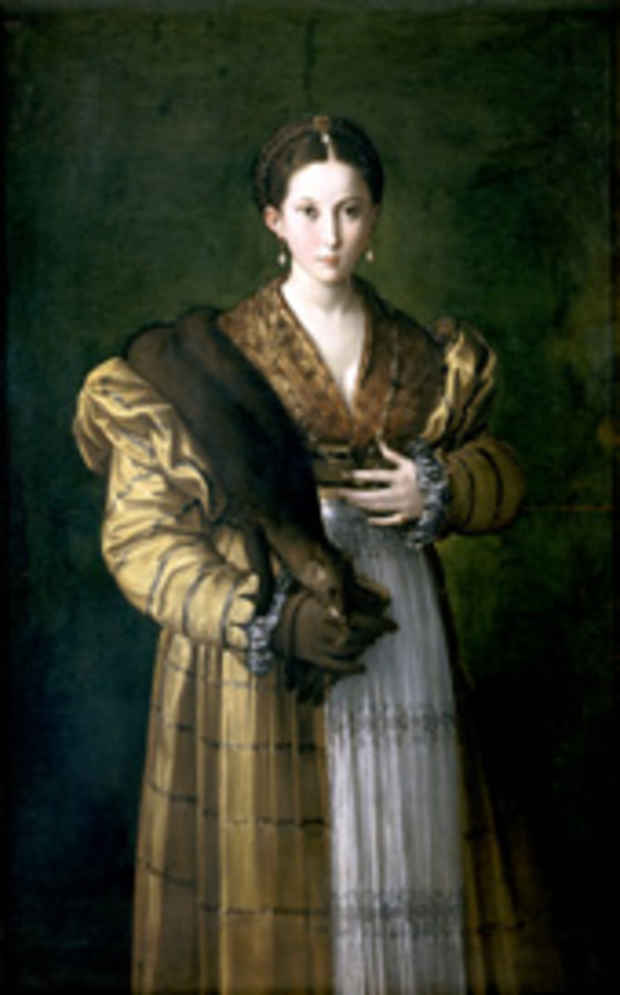"Parmigianino's Antea: A Beautiful Artifice" Exhibition
The Frick Collection

This event has ended.
Parmigianino’s Antea will be on view at The Frick Collection beginning January 29, on special loan from the Museo di Capodimonte in Naples. It is the first time the painting has been exhibited in the United States in more than twenty years. Although a masterpiece of Italian Renaissance female portraiture, little is known about the painting: its date is not firmly established nor is it clear why or for whom the portrait was painted. Even the sitter’s identity is a mystery. This single-painting presentation will offer visitors an unprecedented opportunity to explore the many questions surrounding the Antea as well as the chance to consider the work within its original social and cultural context.
Antea was painted in the early 1530s by Girolamo Francesco Maria Mazzola, known as Parmigianino (1503–1540). Parmigianino depicted Antea standing, looking out at the viewer with surprising frankness. Her perfect oval face is set on an improbably ample body with wide shoulders and hips. The gold satin dress she wears is embellished with silver bands, while her apron and the cuffs of her underdress are decorated with delicate blackwork embroidery. Most of the items worn by Antea — including the marten fur, gold chain, head brooch, embroidered apron, and golden sleeves — were gifts commonly presented by lovers. Often, these were gifts given with the hope of erotic fulfillment, and, by wearing them, a woman stated her acceptance of her lover’s advances. Parmigianino has depicted Antea interacting with these gifts: she fingers the chain and points with her hand to her heart, implying that she is accepting her lover’s offer. As she meets our gaze, her pose and gestures create a dynamic of desire between herself and the viewer, who stands in for her lover.
While there is no known evidence definitively linking the woman Parmigianino depicted to a specific person, her identity has been the cause of speculation for centuries. She was first identified as “Antea” in 1671 by the artist and writer Giacomo Barri, who claimed she was Parmigianino’s mistress. As Antea was the name of a famous sixteenth-century Roman courtesan, it was assumed that this was the woman to whom Barri referred. She has been identified alternatively as the daughter or servant of the artist; a member of an aristocratic northern Italian family; and a noble bride. It is most likely, however, that the Antea represents an ideal beauty, a popular genre of portraiture during the Renaissance. In such portraits, the beauty of the woman and the virtues she stood for were the primary subject, while the sitter’s identity — and even her existence — were of secondary importance.
By creating an impossibly beautiful woman who, nonetheless, seems real enough to step out of the picture and speak to us, Parmigianino invites us to dwell on his unrivaled capacity to conjure an illusion transcending nature itself. A painting such as the Antea challenges us to consider the relationship between desire and art, for the work inspires an emotion both sensual and elevated. Though the woman’s youth is ephemeral, in Parmigianino’s painting, her beauty endures.
Media
Schedule
from January 29, 2008 to April 27, 2008